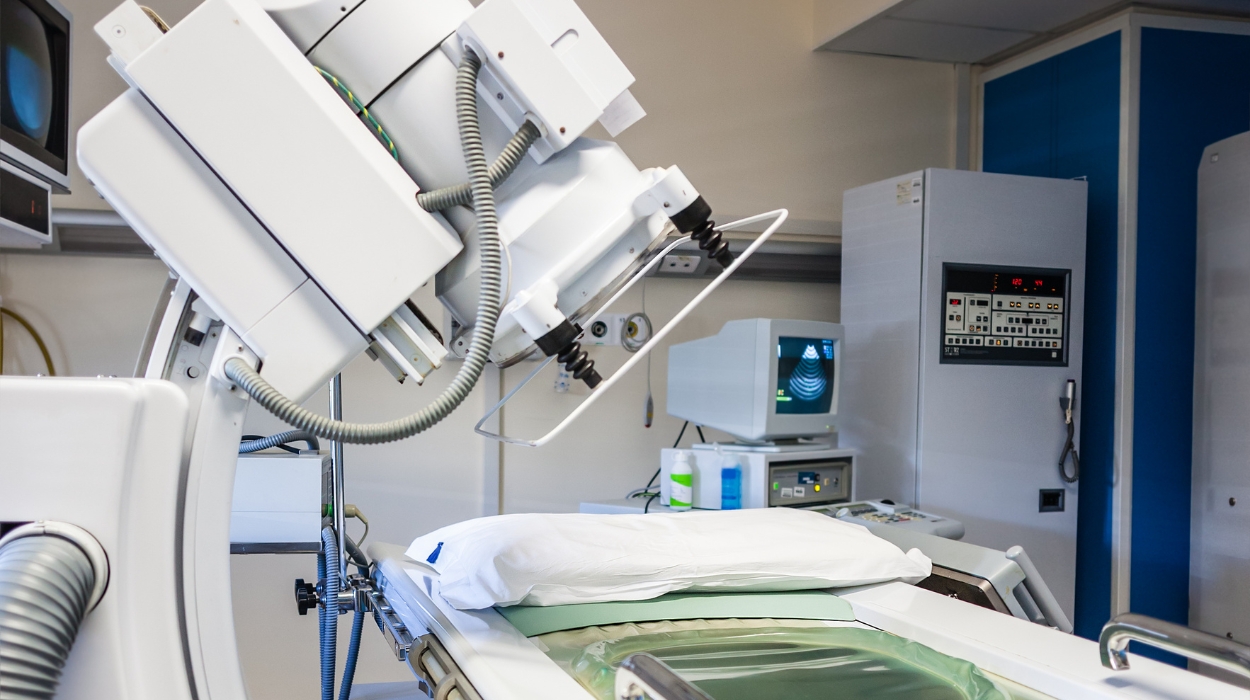 Evidence Based
Evidence Based
Evidence Based
This article is objectively based on relevant scientific literature, written by experienced medical writers, and fact-checked by a team of degreed medical experts.
Our team of registered dietitian nutritionists and licensed medical professionals seek to remain objective and unbiased while preserving the integrity of any scientific debate.
The articles contain evidence-based references from approved scientific sites. The numbers* in parentheses (*1,2,3) will take you to clickable links to our reputable sources.
Kidney Stone Surgery Types: 4 Safe Procedures

If you’ve ever had a kidney stone, you know the severe pain it can cause. It’s no surprise that many people compare it to childbirth. But here’s the good news—medicine has made big leaps in treating kidney stones.
Today, we have a range of surgical procedures,[1] each designed to treat stones of different sizes and compositions. We’re going to take a friendly, easy-to-understand look at four common types of kidney stone surgeries. We’ll discuss what each surgery involves, how they’re done, and what you need to be aware of.
Whether you’re just curious, you suspect you have a stone, or you’re exploring options for treating an already diagnosed stone, this guide will help you understand the ins and outs of kidney stone surgery.
Kidney Stone Surgery Types
There are 4 common types of kidney stone surgeries.
- Shockwave Lithotripsy (SWL). It uses high-energy sound waves to break the stones into small fragments, making them easier to pass through the urinary tract.
- Ureteroscopy is a minimally invasive surgery using a thin, flexible tube inserted into the ureter to locate, remove, or break up the stones.
- Percutaneous Nephrolithotomy (PCNL) is an option that uses a small incision and a narrow tube.
- Open Surgery is a traditional, more invasive method usually reserved for the largest stones or complicated cases.
Kidney Stone Surgery Types
Shockwave Lithotripsy (SWL)
Shockwave Lithotripsy (SWL) is the most common kidney stone treatment. This non-invasive procedure works best for small or medium stones. It is a popular choice due to its convenience and effectiveness.
What Is It?
SWL treats kidney stones using high-energy shock waves[2]. These shock waves are sent from outside the patient’s body, so the procedure is a non-invasive way to break kidney stones into small fragments. The procedure breaks down the stones so they can pass through the urinary tract with less discomfort.
How Is It Done?
During the procedure, the patient lies on a water-filled cushion, and the surgeon images the kidney stone with ultrasound or uses X-ray to pinpoint the exact location. The machine then sends high-frequency sound waves toward the stones to break them into smaller pieces. It’s generally performed as an outpatient procedure under sedation or light anesthesia.

What To Be Aware Of?
While SWL is a popular method to treat kidney stones, it’s important to know that it might not be suitable for everyone. Larger stones, complicated stones, and certain types of hard stones like cystine stones might not respond well to this treatment. Fortunately, uric acid stones, the most common type of kidney stone, respond well[3].
Side effects of SWL can include blood in the urine, bruising on the back or abdomen, bleeding around the kidney, and discomfort as the stone fragments pass through the urinary tract. In some cases, not all stone fragments are broken up enough to pass, requiring further treatment. Discuss the risks and benefits with your healthcare provider before deciding on a treatment method.
Ureteroscopy
Ureteroscopy[4] is a minimally invasive surgical method used primarily for medium stones located in the urinary tract. It’s particularly useful for stones lodged in the ureters, which are the tubes carrying urine from the kidneys to the bladder.
What Is It?
In ureteroscopy, a thin tube (ureteroscope) equipped with a camera is used to find and treat kidney stones. This procedure allows for direct visualization of stones and offers the ability to remove or fragment stones regardless of their composition.
How Is It Done?
During a ureteroscopy, the surgeon inserts the ureteroscope through the urethra and bladder into the ureter. If the stone is small, it’s often removed using a small cage-like device. Larger stones are typically broken up using a laser and later removed. This procedure is typically performed under general anesthesia.
What To Be Aware Of?
While ureteroscopy is generally safe, some patients may experience complications such as urinary tract infections, ureter damage, or kidney injury. In some cases, a temporary drainage tube may need to be placed in the ureter to allow urine to flow from the kidney to the bladder.
Percutaneous Nephrolithotomy (PCNL)
Percutaneous nephrolithotomy (PCNL) is a more invasive procedure[5] than SWL and ureteroscopy. It’s typically used for larger kidney stones or complex stones that can’t be effectively treated with less invasive techniques.
What Is It?
PCNL involves the removal of large or complex kidney stones by making a small incision in the patient’s back and inserting a tube into the kidney.
How Is It Done?
Under general anesthesia, a small incision is made in the patient’s back, and a narrow tube is placed through the incision into the kidney. Small stones are removed, and larger stones are broken up using either a laser or forced air. The stone fragments are then removed through the tube.
What To Be Aware Of?
PCNL is more invasive than SWL or ureteroscopy, so it carries a slightly higher risk of complications, such as bleeding, infection, or kidney injury. Because of its invasive nature, a hospital stay is typically required after the procedure.
Open Surgery
While less common nowadays due to the effectiveness and lower risk of minimally invasive procedures, traditional open surgery still has its place in kidney stone treatment. Open surgery can result in extended recovery time and increased opioid use[6], so it’s usually reserved for very large stones or complicated cases.
What Is It?
Open stone surgery, also known as nephrolithotomy, is a surgical procedure in which a larger incision is made to directly access and remove kidney stones.
How Is It Done?
In open surgery, the surgeon makes an incision in the patient’s back to directly access the kidney and ureter. The stone is then removed through this incision. This procedure requires general anesthesia and usually involves a longer hospital stay and recovery period compared to other procedures.
What To Be Aware Of?
Open surgery is the most invasive type of kidney stone surgery and comes with higher risks, including infection, bleeding, and damage to surrounding organs. It’s generally reserved for very large stones, complex stones, or when other treatments have failed.
The recovery period can be longer and more uncomfortable compared to other kidney stone surgeries. As always, it’s crucial to understand the potential risks and benefits before deciding on a treatment option.
Conclusion
Knowing your options when it comes to kidney stone surgery can help you make an informed decision about your treatment. The type of procedure you and your doctor choose depends on a variety of factors, including the size, location, and type of kidney stones.
From minimally invasive procedures like shockwave lithotripsy and ureteroscopy to more invasive ones like percutaneous nephrolithotomy or open surgery, the goal is always to provide relief and maintain your kidney function. Always remember to discuss your concerns with your doctor and understand the benefits and risks of each procedure.
Frequently Asked Questions
There are four main types of kidney stone surgery: Shockwave Lithotripsy (SWL), Ureteroscopy, Percutaneous Nephrolithotomy (PCNL), and Open Surgery.
Two common procedures to remove kidney stones are Shockwave Lithotripsy (SWL), where high-energy shock waves are used to break up the stones, and Ureteroscopy, where a small tube is inserted into the urethra to either remove the stones or break them into smaller pieces.
Both lithotripsy and ureteroscopy are effective methods for treating kidney stones. The choice between the two usually depends on factors like the size, location, composition of the stones, and the patient’s overall health.
There is no “better” kidney stone surgery, as the most effective treatment depends on individual patient factors.
The main types of kidney stone surgery are Shockwave Lithotripsy (SWL), Ureteroscopy, Percutaneous Nephrolithotomy (PCNL), and Open Surgery.
While the types of surgeries have remained consistent, advancements in technology have made procedures like Ureteroscopy and Percutaneous Nephrolithotomy (PCNL) more effective and less invasive. Similarly, guiding Shockwave Lithotripsy by ultrasound provides surgeons continuous guidance and has made the procedure lower risk and repeatable with fewer adverse effects due to removing the need for X-rays. New methods and techniques are always being researched and developed.
Smaller kidney stones often pass naturally, but larger stones (usually those larger than 5mm according to the kidney stone size chart) often require intervention.
Yes. Lifestyle changes and medication can help prevent kidney stones. Smaller stones may pass naturally with increased hydration. Other other home remedies, such as apple cider vinegar gummies, may aid in prevention (consider this Goli gummies review). However, always consult with your healthcare provider to discuss your options because they may still recommend kidney stone surgery.
+ 6 sources
Health Canal avoids using tertiary references. We have strict sourcing guidelines and rely on peer-reviewed studies, academic researches from medical associations and institutions. To ensure the accuracy of articles in Health Canal, you can read more about the editorial process here
- Lazaros Tzelves, Geraghty, R., Hughes, T., Juliebø-Jones, P. and Somani, B.K. (2023). Innovations in Kidney Stone Removal. [online] Volume 15, pp.131–139. doi:https://doi.org/10.2147/rru.s386844.
- Sun, X. and Zhang, Z. (2006). Shock Wave Lithotripsy for Uric Acid Stones. [online] 29(1), pp.36–39. doi:https://doi.org/10.1016/s1015-9584(09)60292-x.
- Sun, X. and Zhang, Z. (2006). Shock Wave Lithotripsy for Uric Acid Stones. [online] 29(1), pp.36–39. doi:https://doi.org/10.1016/s1015-9584(09)60292-x.
- Tseng, T.Y. and Preminger, G.M. (2015). Kidney stones: flexible ureteroscopy. BMJ clinical evidence, [online] 2015, p.2003. Available at: https://www.ncbi.nlm.nih.gov/pmc/articles/PMC4632914/.
- Minervamedica.it. (2021). Intraoperative and postoperative surgical complications after ureteroscopy, retrograde intrarenal surgery, and percutaneous nephrolithotomy: a systematic review – Minerva Urology and Nephrology 2021 June;73(3):309-32. [online] Available at: https://www.minervamedica.it/en/journals/minerva-urology-nephrology/article.php?cod=R19Y2021N03A0309.
- Krimphove, M.J., Reese, S.D., Chen, X., Marchese, M., Pucheril, D., Cone, E.B., Chou, W.H., Tully, K.H., Kibel, A.S., Urman, R.D., Chang, S.L., Kluth, L.A., Dasgupta, P. and Trinh, Q.-D. (2021). Recovery from minimally invasive vs. open surgery in kidney cancer patients: Opioid use and workplace absenteeism. [online] 62(1), pp.56–56. doi:https://doi.org/10.4111/icu.20200194.



